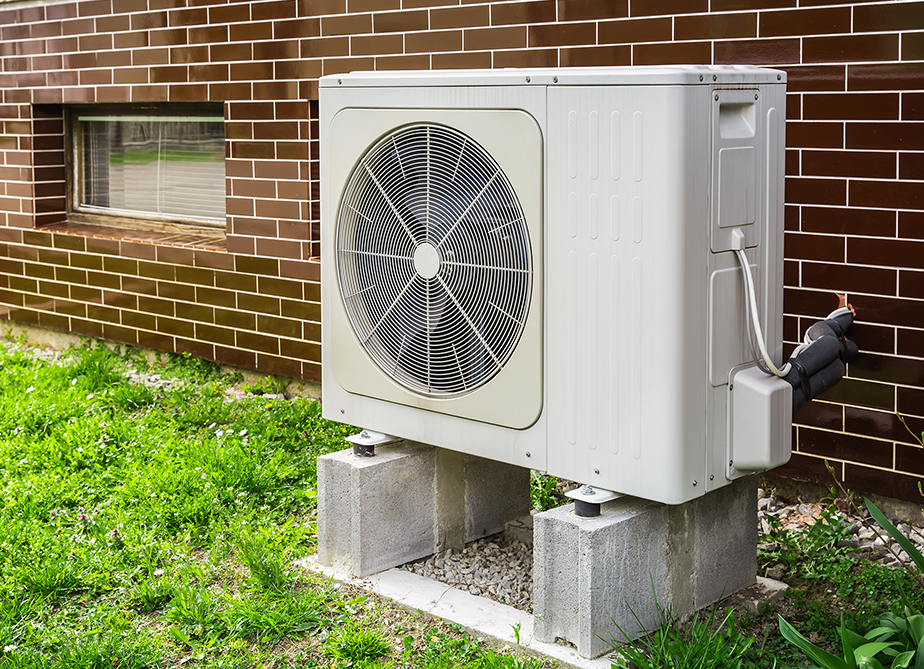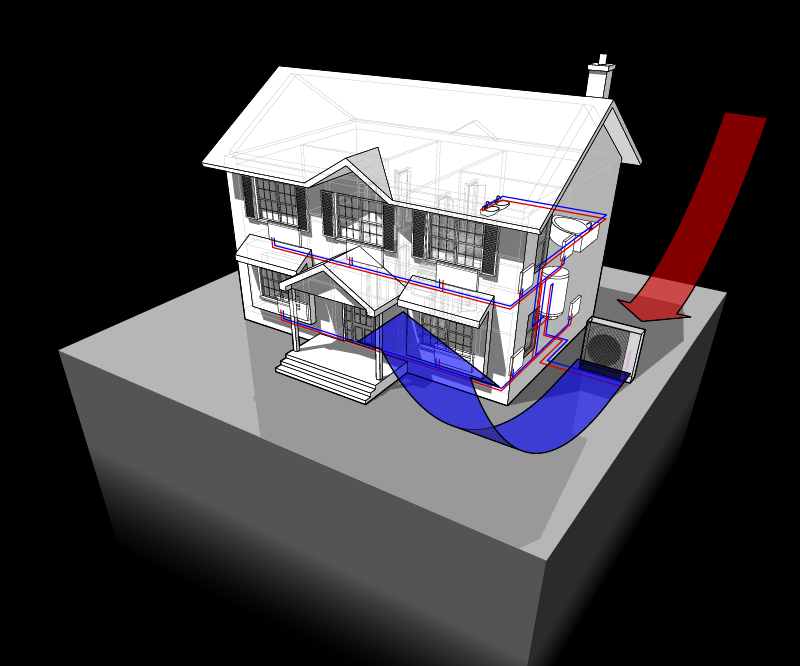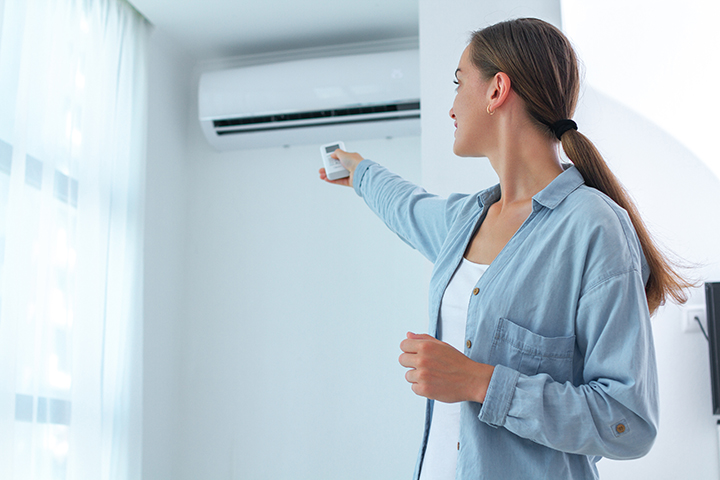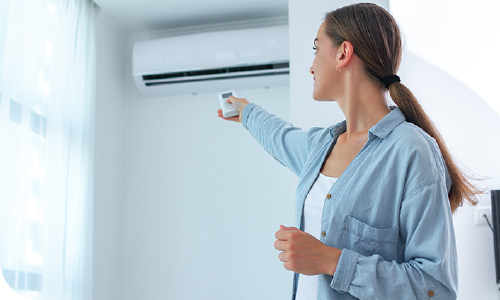An air source heat pump is an energy-efficient system that extracts heat from the outside air to heat your home or business during colder months and reverses the process to provide cooling during warmer months. They also improve indoor comfort by dehumidifying the air, making them a versatile choice for year-round comfort.
Residential
Air Source Heat Pump Incentive
Available when replacing an existing heat pump, adding a heat pump to a previously unconditioned space, or installing one for cooling only.
Energy Optimization Incentive
Available for homeowners replacing natural gas, oil, propane, or electric resistance as the primary heating source with an energy-efficient heat pump. This rebate helps maximize savings and comfort when upgrading your heating system.
Commercial
Air Source Heat Pump Express Incentive
Available for businesses installing air source heat pumps, offering financial incentives for equipment upgrades.
Energy Optimization Incentive
Available for commercial and industrial properties replacing natural gas, oil, propane, or electric resistance heating systems with an energy-efficient heat pump. These rebates help maximize savings and improve overall system efficiency.
Benefits
- Comfort: Get all-in-one heating, cooling, and dehumidification
- Flexibility: Air source heat pumps provide a flexible option for any space—install them in a single room or your entire home or business. Choose between ductless units or use existing ductwork with a centrally-ducted system for added convenience.
- Efficiency: Achieve up to 2-3 times more efficiency—for every one unit of energy used to power a heat pump, up to four units of heat energy are supplied
- Environmental impact: Reduce your carbon footprint by emitting less greenhouse gas emissions
Incentives & Financing
Single Family (1-4 housing units)
INCENTIVES
Air Source Heat Pump Incentive: $250 per ton, up to $15,000 combined incentive for qualifying models
Energy Optimization Incentive: $500 per ton, up to $15,000 combined incentive for qualifying models. A $250 per ton bonus for UI customers using heat pumps as the primary heat source to displace natural gas, oil, propane or electric baseboard heating.
Federal tax credits may be available. Learn more about the IRA tax credits here or speak to your tax preparer.
FINANCING
Multifamily (5 or more housing units)
INCENTIVES
Central/common area air source heat pumps:
Market Rate: $750/ton when displacing electric, oil/proprane, and natural gas
Income Eligible: $1,875/ton when displacing electric and oil/propane, $750/ton when displacing natural gas
Individual dwelling unit ducted air source heat pumps/ductless single zone/ductless multizone air source heat pumps: $500/ton up to five tons
FINANCING
Commercial
INCENTIVES
Air Source Heat Pump Express Incentive: Up to $250 per ton combined incentives for qualifying models
Energy Optimization Incentive: Up to $1,500 per ton combined incentives for qualifying models
Information & Tips
There are both ducted and ductless heat pumps making them suited to homes and businesses with or without existing ductwork.
- Ductless heat pumps, also known as mini splits, are an efficient alternative for heating and cooling areas without existing ductwork or where ductwork would be difficult to install.
- Ducted air source heat pumps are an efficient way to heat and cool your home or business using existing ductwork.
- Efficiency First: Before installing a heat pump, weatherize your home to enhance comfort, reduce energy use and greenhouse gas emissions, and improve equipment efficiency and lifespan.

Ductless heat pumps have three main parts: an indoor unit that mounts on the floor, wall, or ceiling; an outdoor unit that typically sits on the ground; and a remote control that operates the inside unit.
Indoor and outdoor units are connected by small refrigerant lines, which carry heat between the two.
Ducted heat pumps deliver conditioned air through air ducts. They have an exterior unit that extracts heat from the outside air, which is carried by refrigerant to an interior unit for distribution throughout your home or business. During the summer, they work in reverse to provide central air conditioning and keep you cool.
To pick the right heat pump for your home or business, consult with a qualified contractor that participates in the Energize CT Heat Pump Installer Network.
If you find a system that is listed on the Energize CT Heat Pump Qualified Products List, and qualifies based on our Air Source Heat Pump Efficiency Ratings Chart, simply have your contractor purchase a qualifying heat pump on your behalf and you can take advantage of our instant discounts. When the installation is complete, work with your contractor to find out if you qualify for an additional energy optimization rebate.
- Efficiency first: Before upgrading your heating system, consider preliminary measures, such as sealing and insulating your ductwork or completing weatherization work. Heat pumps installed in a properly weatherized home can dramatically improve comfort, and a tighter, more insulated home will not only save money on operating costs and reduce carbon emissions throughout the year - it may also allow you to buy smaller, less expensive equipment.
- Electrical usage: A heat pump is an electrical system, so running one will add to your electrical use. In many cases, that additional electrical use is offset by savings elsewhere, such as a propane or oil heating fuel bill.
- Quality installation: Heat pumps work best when correctly sized and designed for your home or business. Working closely with a qualified contractor will help ensure your system is designed to meet your heating and cooling needs
Compare the annual cost and carbon emissions savings from investing in a new heating and cooling system. The Clean Heating & Cooling Calculator can help you see how much upgrading your system to heat pumps would reduce your carbon emissions – and what it would mean for your home’s budget.

How Air Source Heat Pumps Work
Air source heat pumps move heat inside in the winter and draw heat outside in the summer. Instead of burning fossil fuels, like oil or propane, they use a refrigerant cycle, powered by electricity, to move heat and keep your home or business at a comfortable temperature year-round.
Other Helpful Resources
Other Helpful Resources
-
Learn more about heat pumps
Download the heat pump brochure.
![]()
-
Heat pump user tips
Get the most from your heat pump.
![]()
-
Questions for your installer
Download a list of questions you can ask your installer.
![]()
-
Quality installation checklist
Download the Air Source Heat Pump Quality Installation Check-list.
![]()
-
Explore Clean Heating and Cooling Technologies
Explore a variety of clean heating and cooling technologies designed to enhance comfort and efficiency while reducing energy costs.
![]()
Also Explore ➞
Home Energy Assessments
- Request an energy assessment of your home.
- Receive customized energy-saving recommendations.
- Get help implementing energy-saving measures from a technician or receive rebates and incentives to implement them yourself.













